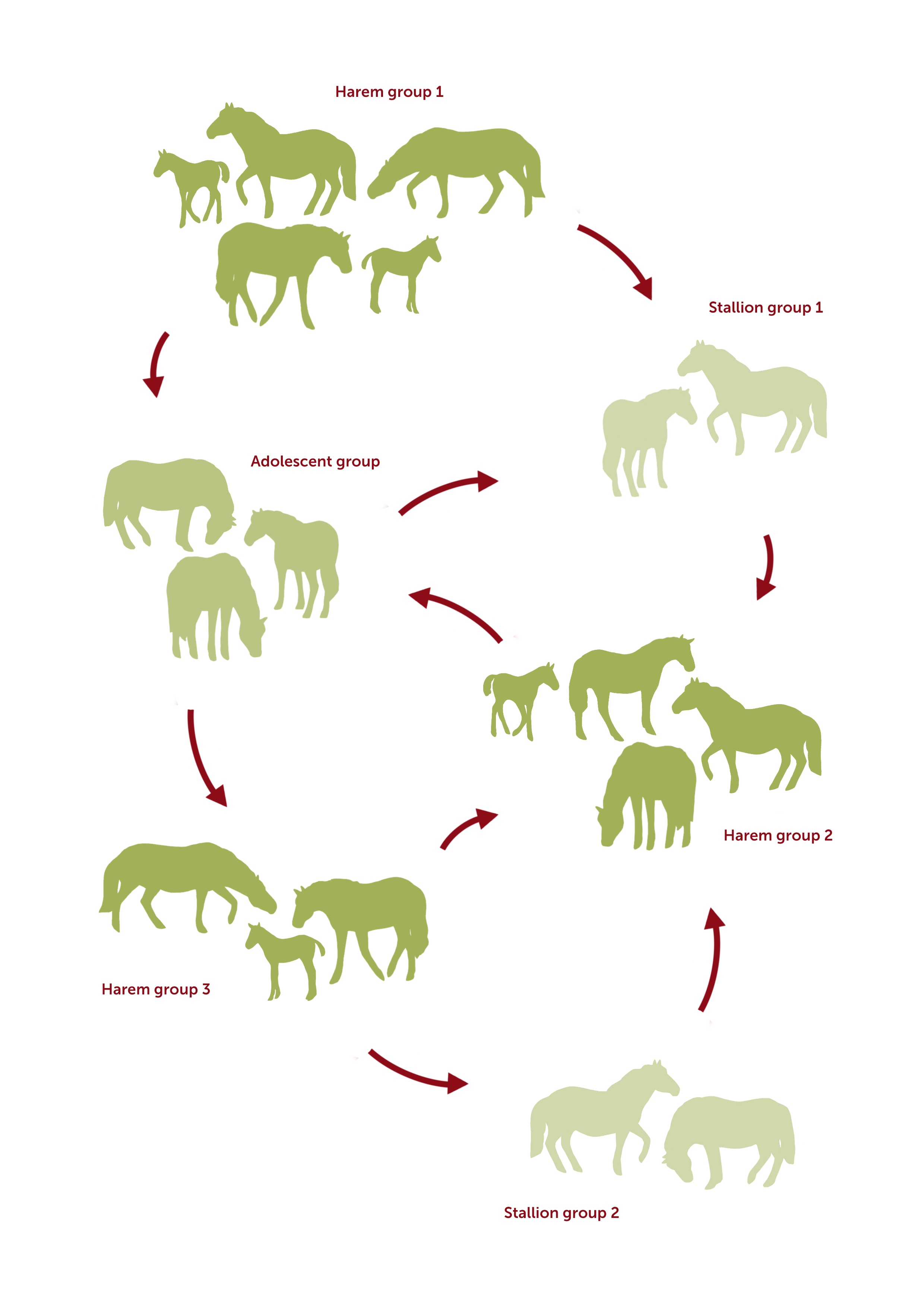What does a social herd of horses look like?
Large grazers that live in the wild year-round, create their own groups and establish their own relationships. We name these groups 'social herds', a term you'll find we use regularly in our communication. Our horses and cattle both live in social herds: horses form harems, cattle live under a matriarch. In this article, we dive deeper into the social herd structure of horses. What does a social horse herd actually look like?
The presence of social herds in a natural area, facilitates spontaneous, natural processes. These processes affect not only the herd itself (such as inbreeding avoidance, as the horses determine with whom they breed), but also how the animals use their habitat.
A social herd structure has a number of set characteristics. For example, the herd consists of both males and females. There is a varied age structure of both younger and older animals. Foals usually stay with their mothers until they become fertile (around the age of two). In addition, humans do not have a determining influence on herd composition.

Horses live in harem groups
Social herds of horses naturally form so-called 'harems'. These consist of a stallion with one or more, unrelated mares. In larger harems, the stallion may be assisted by a second stallion: the 'secondant'. He helps protect the harem and sometimes the secondant may - in exchange for his help - cover one of the mare in the harem.
'Satellite stallions' sometimes circle the harem. These are not part of the harem, but they tend to stay nearby. They often have the intention of mating a mare, but this is by no means a mission that is guaranteed with success.
Young horses leave their birth group around the age of two. Often these animals form an 'adolescent group', consisting of both stallions and mares. However, stallions also have the option to join a 'stallion group' consisting of stallions of different ages. From these stallion and adolescent groups, new harems may form.
Within the harem, there is a hierarchical structure. Contrary to popular belief, it's the mares that determine when the herd moves and where the harem goes. The horse with the most experience and knowledge of the area takes the lead in this. But the hierarchy can change: usually the oldest mare takes charge, but a young mare with a newborn foal may take over. While the mares determine the ins and outs of the harem, it is the stallion's job to protect the harem from outside dangers. These can be predators, but also other stallions who have an eye on the mares in the harem.

Human influence
As described earlier, humans do not influence herd composition. The animals develop their own relationships. But, in the case of natural grazing under a herd manager, the manager does have the responsibility of number regulation. Because our large grazers are legally semi-wild, we have a duty of care. This means not only keeping an eye on the health and welfare of the animals, but also making sure that the number of animals grazing in an area matches the available forage.
New foals are born every year. Sometimes this means that the 'grazing pressure' in an area becomes too high. This has a negative impact on biodiversity, as well as animal welfare. To determine the grazing pressure of an area, one looks at the food supply in the season of scarcity. In the Netherlands, that is winter. If the grazing pressure is too high, causing problems for animals in winter, then animals must be removed from an area. Sometimes these animals are moved to another area, sometimes these horses are slaughtered.
It is up to our herd managers to make an informed decision in this regard, well before winter sets in. So when deciding which animals to remove from an area, the herd manager does not make a snap decision: the choice is not arbitrary. Genetics are considered, as well as the behavior of the animals and their role within the social herd structure. For example, it is preferable to remove a small harem as a whole from the area, rather than individual animals from different harems.

How about bovines?
Unlike horses, bovines live in a so-called 'matriarchal structure'. This will be discussed in detail in this subsequent article.

